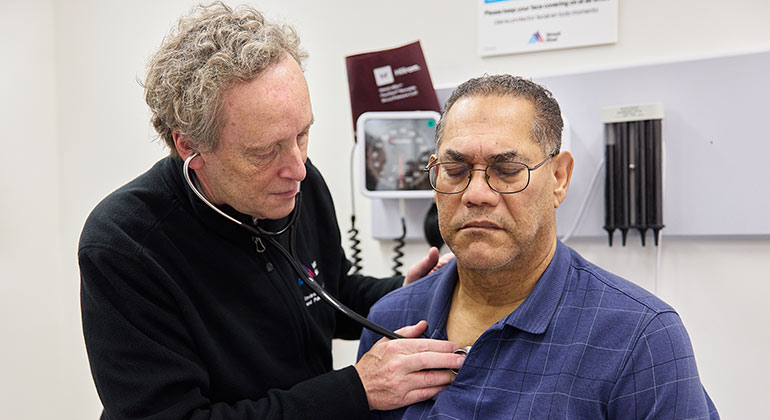Evaluation of Work-Related Conditions

Each year, more than three million nonfatal work-related illnesses and injuries are reported by private industry in the United States. These injuries and illnesses, as well as those that go unreported, can be caused by job-related physical activities, accidents, exposure to toxins or allergens in the workplace, and stress.
At the Mount Sinai Selikoff Centers for Occupational Health, we provide a broad range of services to our patients. Our services include:
- Confidential medical exams
- Diagnosis and treatment of work-related medical conditions
- Assistance with workers’ compensation and other benefits
- Injury prevention and ergonomics education
- Screenings for exposure to work-related hazards
- Social work services
- Hearing conservation programs
- Pre-placement and fit-for-duty evaluations
- Return-to-work assessments
- World Trade Center (WTC) Health Program services for 9/11 workers and volunteers
Coordination of care with specialists involved in your treatment. We offer services and resources for workers in English, Spanish, and Polish.
What Are Occupational Injuries?
Occupational injuries (also known as work-related injuries) are any physical injuries that occur in the work environment or are due to a job function. Some examples of occupational injuries include:
- Burns
- Carpal Tunnel Syndrome
- Chronic Neck Pain
- De Quervain Tendinitis
- Diphtheria/Tetanus
- Elbow Sprain
- General Sprains
- Golfer's Elbow
- Hearing Loss
- Knee Pain
- Low Back Pain
- Mallet Finger
- Musculoskeletal Disorder (MSD)
- Quadriceps Pain
- Rotator Cuff Damage
- Sciatica
- Tendinitis
- Tennis Elbow
- Tenosynovitis
- Traumatic Brain Injury/Concussion
- Trigger Finger
- Wounds/Lacerations
- Wrist Sprains
What Are Occupational Illnesses?
Occupational illnesses can happen when you are exposed to things in the workplace that may cause you to become sick. Some examples of occupational illnesses include: